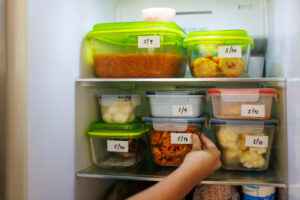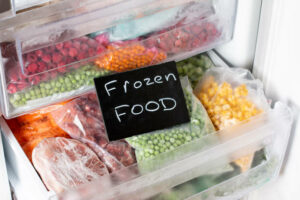Got Leftover Questions?
go.ncsu.edu/readext?1024834
en Español / em Português
El inglés es el idioma de control de esta página. En la medida en que haya algún conflicto entre la traducción al inglés y la traducción, el inglés prevalece.
Al hacer clic en el enlace de traducción se activa un servicio de traducción gratuito para convertir la página al español. Al igual que con cualquier traducción por Internet, la conversión no es sensible al contexto y puede que no traduzca el texto en su significado original. NC State Extension no garantiza la exactitud del texto traducido. Por favor, tenga en cuenta que algunas aplicaciones y/o servicios pueden no funcionar como se espera cuando se traducen.
Português
Inglês é o idioma de controle desta página. Na medida que haja algum conflito entre o texto original em Inglês e a tradução, o Inglês prevalece.
Ao clicar no link de tradução, um serviço gratuito de tradução será ativado para converter a página para o Português. Como em qualquer tradução pela internet, a conversão não é sensivel ao contexto e pode não ocorrer a tradução para o significado orginal. O serviço de Extensão da Carolina do Norte (NC State Extension) não garante a exatidão do texto traduzido. Por favor, observe que algumas funções ou serviços podem não funcionar como esperado após a tradução.
English
English is the controlling language of this page. To the extent there is any conflict between the English text and the translation, English controls.
Clicking on the translation link activates a free translation service to convert the page to Spanish. As with any Internet translation, the conversion is not context-sensitive and may not translate the text to its original meaning. NC State Extension does not guarantee the accuracy of the translated text. Please note that some applications and/or services may not function as expected when translated.
Collapse ▲ Practicing basic food safety can help us serve and enjoy safe food. These are the four basic food safety steps to remember when cooking food at home:
Practicing basic food safety can help us serve and enjoy safe food. These are the four basic food safety steps to remember when cooking food at home:
- Clean your hands, food prep surfaces, and cooking space.
- Separate raw meat, poultry, and fish from all other foods. This helps to prevents contamination from these raw foods to foods that won’t be cooked such as fruits and vegetables.
- Cook foods to appropriate temperatures. Use a food thermometer to determine
internal temperatures of food and cook food to minimum recommended
temperatures. - Chill foods properly. Refrigerator temperatures should be 41 degrees F or
below. Using a thermometer is the best way to know the temperature inside
your refrigerator.
We frequently get questions about food safety when heating, storing and eating
leftovers. There seem to be a lot of misconceptions on this topic. Here are some FAQs on leftover food safety.
How many times can I reheat leftovers?
It’s best practice to reheat leftovers only once. Separate the portion you want to reheat, and leave the rest of the leftovers in the fridge for another meal. When you repeatedly heat and cool leftovers, the risk for food poisoning increases. Be sure to reheat leftovers completely to 165 degrees F. If you are using a microwave, remove leftovers halfway through the reheat and stir to distribute the heat and eliminate cold spots.
Can I refreeze food that has thawed or must I cook it first?
You may refreeze food after it has thawed, but only if it has been thawed in the
refrigerator. This ensures it was kept below 41 °F and out of the temperature range where harmful bacteria could grow rapidly.
We get this question frequently after power outages and food in the freezer has thawed. If the food itself is still below 41 °F it can be safely refrozen without cooking. You really need a thermometer to know, just touching the food to see if it feels cool/cold is not good enough.
Thawed and refrozen food will be safe, but it may lose quality. Foods lose moisture
while thawing, so the refreezing and rethawing will likely cause the quality of the food
to decrease.
An exception, if the food was thawed in the microwave, it needs to be fully cooked
before freezing again.
If I make a big pot of something like soup, stew or sauce, do I need to cool it before I put it in the refrigerator?
Get it in the refrigerator ASAP. For large amount of food, speed the cooling by putting it in shallow containers and/or using an ice bath. For small amounts of leftovers, let the refrigerator cool them down.
Is it safe to reheat and eat food that was forgotten on the counter overnight?
NO. Four hours is the MAXIMUM time perishable food should be kept at room
temperature. Reheating food that has been left out for longer than that may not make
it safe. Some bacteria, such as Staphylococcus aureus (staph), can form a heat-resistant toxin that cooking (even to 165 degrees F) won’t destroy.
How long can I keep leftovers?
If all the principles of clean, separate, cook and chill were followed, leftovers can be
kept in the refrigerator (below 41 degrees F) for up to one week. If you don’t think you
can eat the food within seven days, many items can be frozen. Food can be kept in the freezer indefinitely. But quality does go down the longer food is frozen as they lose moisture and flavor. A good rule-of-thumb (for quality) eat frozen leftovers withing two to four months. After that they will be safe—but might have an “off” flavor or will be dried out.
Resources: Eat Smart, Move More, Prevent Diabetes, Safe Plates Information Center
and US Department of Agriculture
Syracuse is a Family and Consumer Science team member and can be reached at N.C. Cooperative Extension, Brunswick County Center 910-253-2610 or by email at
clsyracu@ncsu.edu



